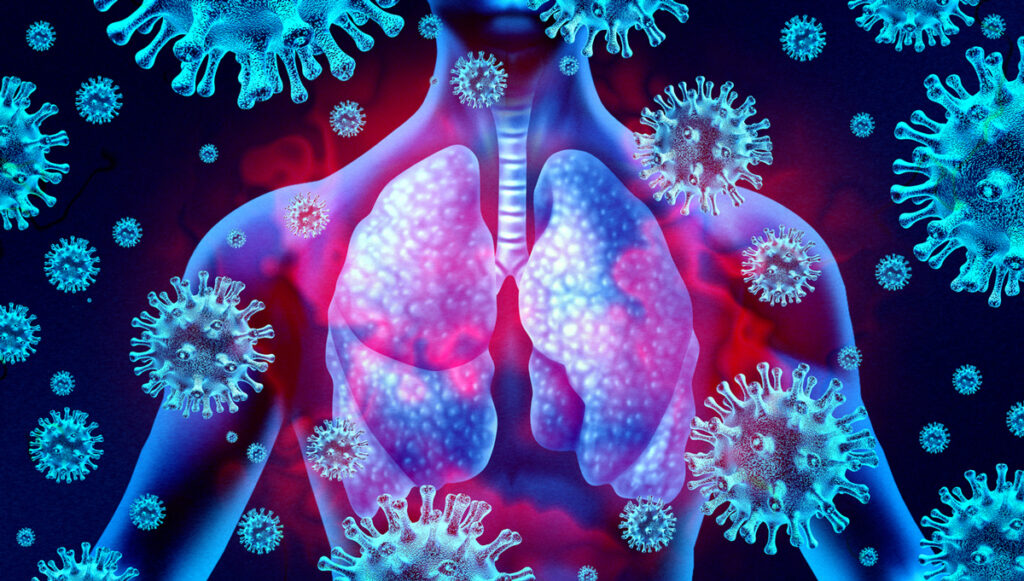Last year brought its share of challenges. Finding solutions is the hard work awaiting everyone in the healthcare community this year.
February 2023 – The Journal of Healthcare Contracting
2022 presented all kinds of challenges for providers, patients and public health professionals. No doubt many of those challenges will linger in 2023, and new ones will arise. However, researchers, providers, public health professionals, lawmakers – and supply chain leaders – can be expected to keep working through the tough issues facing them. In the first part of a series, JHC examines the following issues:
- Respiratory season
- Monkeypox
Respiratory season: In like a lion

Predictions of a tumultuous respiratory season – fueled by COVID-19, influenza and respiratory syncytial virus – appeared to be coming true at year’s end. Will any of the public-health-related measures society learned during the pandemic ease the damage?
In November, the Centers for Disease Control and Prevention (CDC) reported that early increases in seasonal influenza activity were continuing nationwide, with the Southeast and South-Central areas of the country hardest hit. The agency estimated that as of Nov. 1, influenza accounted for 1.6 million illnesses, 13,000 hospitalizations and 7,300 deaths (including two pediatric deaths), and the cumulative hospitalization rate was higher than the rate observed in week 43 during every previous season since 2010-2011.
In addition to elevated levels of flu, CDC was tracking rises in respiratory syncytial virus (RSV), Rhino viruses and animal viruses. Children’s hospitals were overflowing with RSV patients.
Long COVID
Although the incidence of COVID-19 had abated by late 2022, the healthcare community still faced a challenging after-effect – Long COVID. Between 7.7 million and 23 million people in the United States could have Long COVID, whose symptoms can linger for weeks, months and even years, according to U.S. government estimates.
The most reported symptoms include fatigue, symptoms that worsen after physical or mental effort, fever, and lung (respiratory) symptoms, including difficulty breathing or shortness of breath and cough.
People who had suffered severe illness with COVID-19 were more likely to experience organ damage affecting the heart, kidneys, skin and brain. Abnormalities of the thyroid joined the ever-growing list of side effects attributed to Long COVID, according to research presented at the American Thyroid Association 2022 Annual Meeting in October. Inflammation and problems with the immune system were also said to occur. Effects such as these could lead to the development of new conditions, such as diabetes or a heart or nervous system condition, according to Mayo Clinic.
At year’s end, researchers were still questioning whether Long COVID is a new syndrome and unique to COVID-19. That’s because some symptoms are similar to those caused by chronic fatigue syndrome and other chronic illnesses that develop after infections. Despite the questions, however, the healthcare community continued to learn more about Long COVID, how to treat it, and even how to prevent it.
For example, in November, the U.S. Department of Veterans Affairs released a study showing the medication Paxlovid can reduce the risk of symptoms of Long COVID. The study, which included more than 56,000 veterans with a positive SARS-CoV-2 test, showed that those given the oral antiviral medication in the first five days of a COVID-19 infection had a 25% decreased risk of developing 10 of 12 different Long COVID conditions studied, including heart disease, blood disorders, fatigue, liver disease, kidney disease, muscle pain, neurocognitive impairment and shortness of breath.
Monkeypox: Lessons learned about ‘stigma’ disease
Monkeypox cases were declining by year’s end, but some observers believe progress could have been swifter.
In the U.S., about 27,635 cases were reported in late October, about 85% down from the peak at the outbreak, reported Demetre Daskalakis, MD, White House National Monkeypox Response deputy coordinator. However, he added, “the outbreak is really concentrated in communities of color, specifically among Black individuals.”
The CDC reported on a clinical consultation for 57 hospitalized patients with severe manifestations of monkeypox, most of whom were Black men with AIDS. Delays had been observed in initiation of monkeypox-directed therapies. Twelve patients died, and monkeypox was a cause of death or contributing factor in five patients to date, with several other deaths still under investigation.
As a result, CDC advised clinicians to consider early treatment with available therapeutics for those at risk for severe monkeypox disease, particularly patients with AIDS. Engaging all persons with HIV in care remains a critical public health priority.
According to one U.S. epidemiologist, the monkeypox experience demonstrated that the world has made little progress since the 1980s AIDS epidemic. “As with the AIDS epidemic, sluggish responses from governments and international institutions, plus outright homophobia and bureaucratic bumbling, have hampered efforts to contain the outbreak,” wrote Gregg Gonsalves, an epidemiologist at the Yale School of Public Health in New Haven, Connecticut, in a commentary in Nature. “Very often, humanity has the ability to prevent and treat infectious disease; not doing so is a political choice.”
That said, public health officials around the world were applying lessons learned from the AIDS epidemic to monkeypox. “Local staff in the most affected states [in Nigeria] have reported that stigma, connected with commentary from across the world blaming gay people for monkeypox, is discouraging some people from seeking care,” said Dr Leo Zekeng, UNAIDS Country Director and Representative in Nigeria in August. “State Health officials are working to ensure that staff at health clinics are sensitized to break down such stigma, and not to reinforce it. State Ministry of Health officials are also embarking on community sensitization on monkeypox, emphasizing identification of symptoms, prevention and the need to get tested.”
In September, the U.S. FDA made a significant step forward in early detection of monkeypox by authorizing emergency use of in vitro diagnostics for the detection or diagnosis of monkeypox. These diagnostics may detect the monkeypox virus specifically or more generally detect non-variola orthopoxviruses, which include monkeypox virus.
